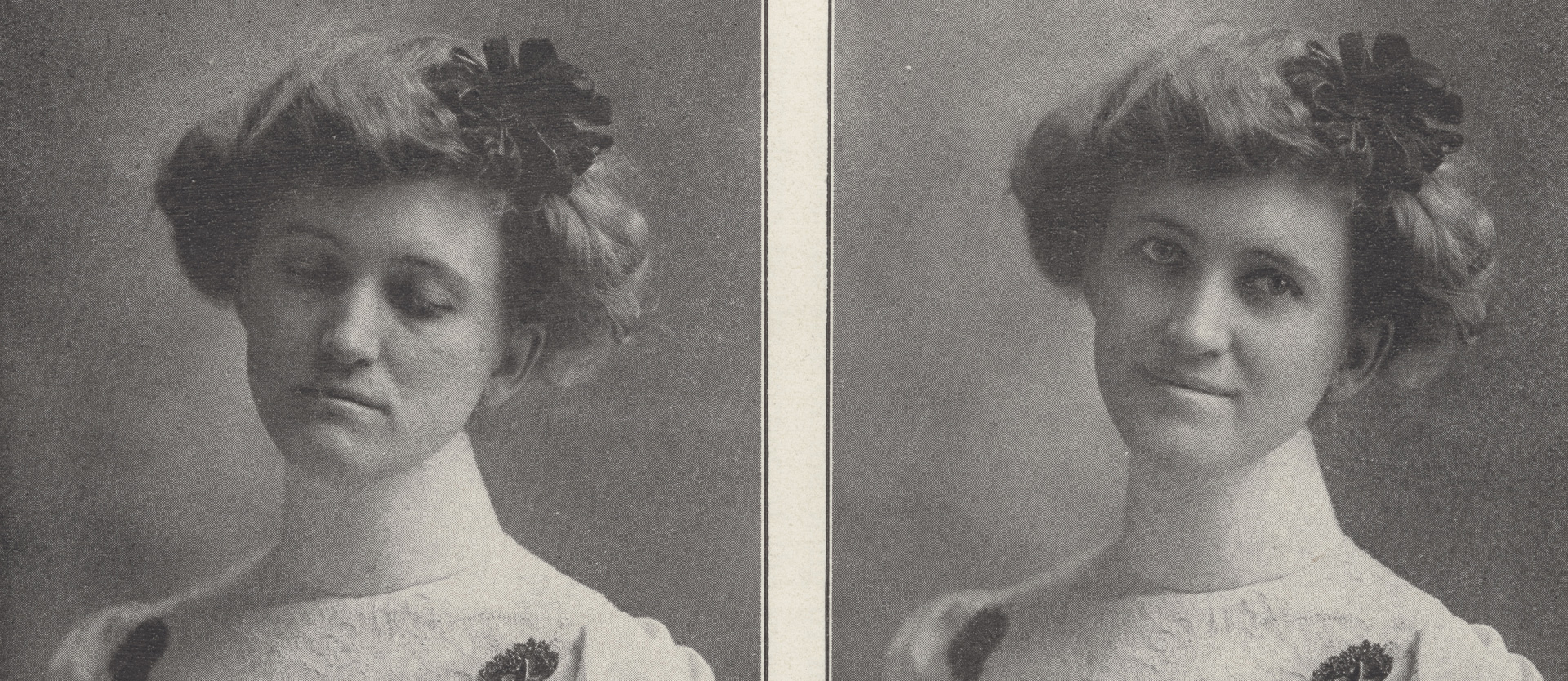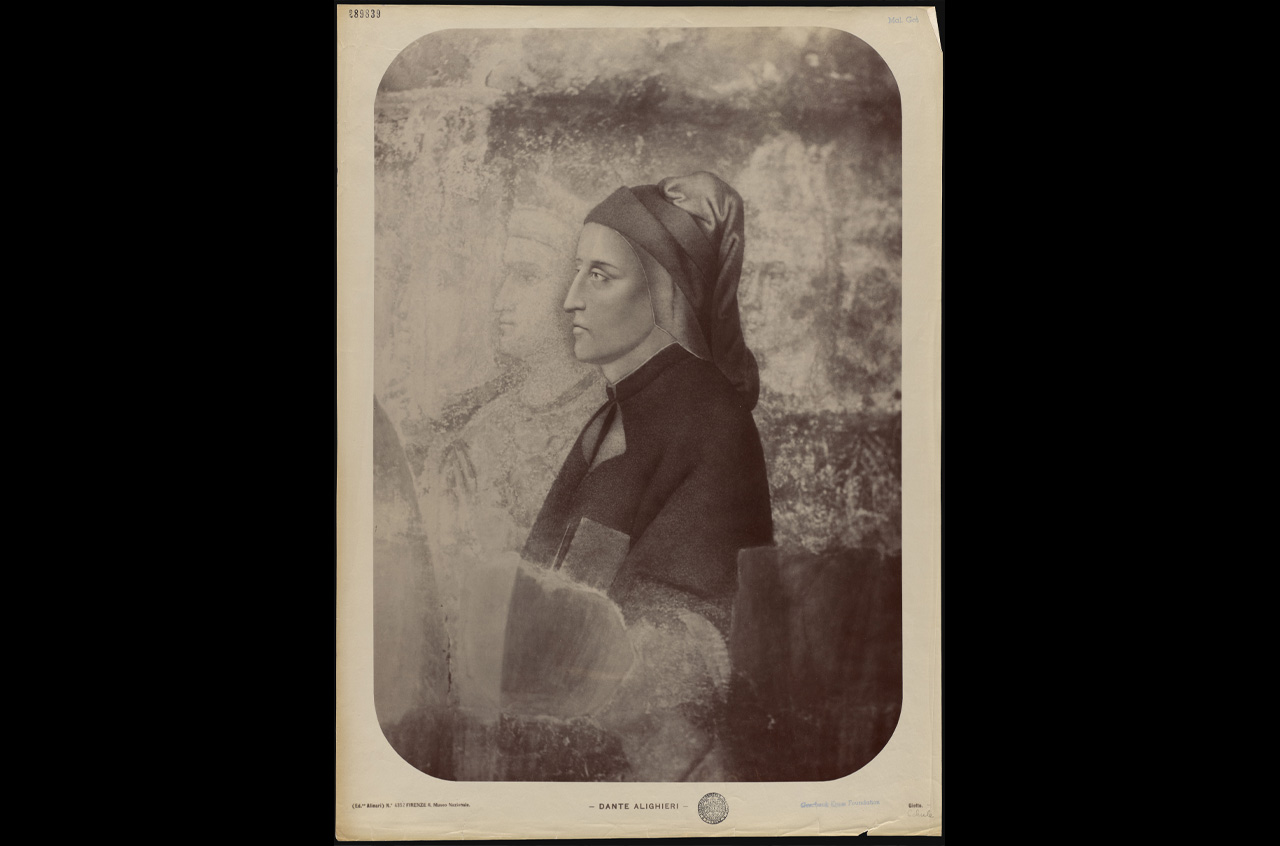
Damnatio Memoriae
The most radical intervention is probably the removal of entire picture elements by cutting out, scraping off, and painting over parts of the emulsion layer on the negative. In this way, not only objects but entire people can be erased from the picture. Dagmar Keultjes explains: "During my research, I came across the removal of staffage figures in architectural and landscape photographs, as well as the targeted removal of people belonging to indigenous minorities or individuals who had fallen into political disfavor. These photographs still bear witness to discrimination and erasure today."

Fratelli Alinari, Porträt des Dante Alighieri, Albuminpapier, vor 1896, Photothek KHI, Inv. Nr. 289839 © Foto: Kunsthistorisches Institut in Florenz – Max-Planck-Institut
Using historical and current examples from the collection, the online exhibition of the Photothek of the Kunsthistorisches Institut in Florence presents retouching techniques. Retouching also has a firm place in art historical documentary photography, but it follows strict criteria so that its documentary character is preserved. For the subject always touches on questions about the limits of image manipulation, especially when photography is in the service of scientific documentation.
So how honest with his photos is the user who is well connected in social media? "That's a question everyone has to answer for themselves," says Dagmar Keultjes. "The possibilities of image editing are enormous." All the more exciting for the art historian is the consideration of whether we use them to create images that distort our own memories. "In his book "Cultural Memory," Jan Assmann describes the importance that pictorial works have for memory, as they symbolize ideas that are then stored in memory," says Keultjes, asking, "Aren't we exposing ourselves to a personal "visual memory disorder" when we retouch our private images? On the other hand - and this is a thoroughly positive effect - the easily accessible tools of image manipulation offer endless possibilities for creativity, especially in the private sphere."
Online exhibition:
Retouching. Image manipulation in photography
An online exhibition of the Photothek of the Art History Institute in Florence - Max Planck Institute.
Visit online at: photothek.khi.fi.it/documents/oau/00000311









